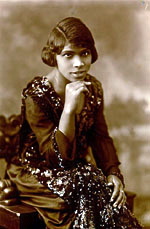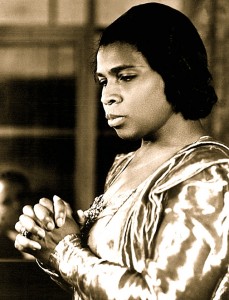Marian Anderson
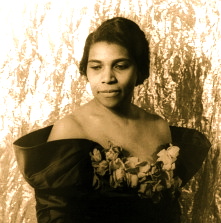
Marian Anderson—Seven Decades at Carnegie Hall and Beyond: From the Carnegie Hall Archives
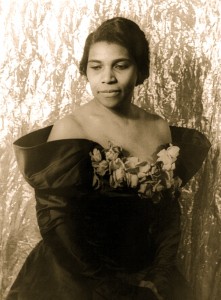 Marian Anderson in 1940, by Carl Van Vechten
Marian Anderson in 1940, by Carl Van Vechten
Marian Anderson (February 27, 1897 – April 8, 1993) was an African-American contralto and one of the most celebrated singers of the twentieth century. Music critic Alan Blyth said “Her voice was a rich, vibrant contralto of intrinsic beauty.” Most of her singing career was spent performing in concert and recital in major music venues and with famous orchestras throughout the United States and Europe between 1925 and 1965. Although offered roles with many important European opera companies, Anderson declined, as she had no training in acting. She preferred to perform in concert and recital only. She did, however, perform opera arias within her concerts and recitals. She made many recordings that reflected her broad performance repertoire of everything from concert literature to lieder to opera to traditional American songs and spirituals.
Anderson became an important figure in the struggle for black artists to overcome racial prejudice in the United States during the mid-twentieth century. In 1939, the Daughters of the American Revolution (DAR) refused permission for Anderson to sing to an integrated audience in Constitution Hall. The incident placed Anderson into the spotlight of the international community on a level unusual for a classical musician. With the aid of First Lady Eleanor Roosevelt and her husband Franklin D. Roosevelt, Anderson performed a critically acclaimed open-air concert on Easter Sunday, April 9, 1939, on the steps of the Lincoln Memorial in Washington, D.C. She sang before a crowd of more than 75,000 people and a radio audience in the millions. Anderson continued to break barriers for black artists in the United States, becoming the first black person, American or otherwise, to perform at the Metropolitan Opera in New York City on January 7, 1955. Her performance as Ulrica in Giuseppe Verdi’s Un ballo in maschera at the Met was the only time she sang an opera role on stage.
Anderson worked for several years as a delegate to the United Nations Human Rights Committee and as a “goodwill ambassadress” for the United States Department of State, giving concerts all over the world. She participated in the civil rights movement in the 1960s, singing at the March on Washington for Jobs and Freedom in 1963. The recipient of numerous awards and honors, Anderson was awarded the Presidential Medal of Freedom in 1963, the Kennedy Center Honors in 1978, the National Medal of Arts in 1986, and a Grammy Lifetime Achievement Award in 1991.
Early Life and Career
Anderson in 1920
Marian Anderson was born on February 27, 1897, in Philadelphia, Pennsylvania, the daughter of John Berkley Anderson and the former Annie Delilah Rucker. Her father sold ice and coal at the Reading Terminal in downtown Philadelphia and eventually opened a small liquor business as well. Prior to her marriage, Anderson’s mother had briefly attended the Virginia Seminary and College in Lynchburg and had worked as a schoolteacher in Virginia. As she did not obtain a degree, Annie Anderson was unable to teach in Philadelphia under a law that was applied only to black teachers and not white ones. She therefore earned an income caring for small children. Marian was the eldest of the three Anderson children. Her two sisters, Alice (later spelled Alyse) (1899–1965) and Ethel (1902–1990), also became singers. Ethel married James DePreist and their late son, James Anderson DePreist was a noted conductor.
Anderson’s parents were both devout Christians and the whole family was active in the Union Baptist Church in South Philadelphia. Marian’s Aunt Mary (John Berkley’s sister) was particularly active in the church’s musical life and, noticing her niece’s talent, convinced her to join the junior church choir at the age of six. In that role she got to perform solos and duets, often with her Aunt Mary. Marian was also taken by her aunt to concerts at local churches, the YMCA, benefit concerts, and other community music events throughout the city. Anderson credited her aunt’s influence as the reason she pursued a singing career. Beginning as young as six, her aunt arranged for Marian to sing for local functions where she was often paid 25 or 50 cents for singing a few songs. As she got into her early teens, Marian began to make as much as four or five dollars for singing; a considerable amount of money for the early 20th century. At the age of 10, Marian joined the People’s Chorus under the direction of singer Emma Azalia Hackley, where she was often given solos.
When Anderson was 12, her father was accidentally struck on the head while at work at the Reading Terminal, just a few weeks before Christmas of 1909. He died of heart failure a month later at age 34. Marian and her family moved into the home of her father’s parents, Grandpa Benjamin and Grandma Isabella Anderson. Her grandfather had been born a slave and had experienced emancipation in the 1860s. He was the first of the Anderson family to settle in South Philadelphia, and when Anderson moved into his home the two became very close. He died only about a year after the family moved in.
Anderson attended Stanton Grammar School, graduating in the summer of 1912. Her family, however, could not afford to send her to high school, nor could they pay for any music lessons. Still, Anderson continued to perform wherever she could and learn from anyone who was willing to teach her. Throughout her teenage years, she remained active in her church’s musical activities, now heavily involved in the adult choir. She joined the Baptists’ Young People’s Union and the Camp Fire Girls which provided her with some limited musical opportunities. Eventually the directors of the People’s Chorus and the pastor of her church, Reverend Wesley Parks, along with other leaders of the black community, raised the money she needed to get singing lessons with Mary S. Patterson and to attend South Philadelphia High School, from which she graduated in 1921.
After high school, Anderson applied to an all-white music school, the Philadelphia Music Academy (now University of the Arts), but was turned away because she was black. The woman working the admissions counter replied, “We don’t take colored” when she tried to apply. Undaunted, Anderson pursued studies privately with Giuseppe Boghetti and Agnes Reifsnyder in her native city through the continued support of the Philadelphia black community. She met Boghetti through the principal of her high school. Anderson auditioned for him singing ‘Deep River’ and he was immediately brought to tears. In 1925 Anderson got her first big break when she won first prize in a singing competition sponsored by the New York Philharmonic. As the winner she got to perform in concert with the orchestra on August 26, 1925, a performance that scored immediate success with both audience and music critics. Anderson remained in New York to pursue further studies with Frank La Forge. During the time Arthur Judson, whom she had met through the NYP, became her manager. Over the next several years, she made a number of concert appearances in the United States, but racial prejudice prevented her career from gaining much momentum. In 1928, she sang for the first time at Carnegie Hall. Eventually she decided to go to Europe where she spent a number of months studying with Sara Charles-Cahier before launching a highly successful European singing tour.
European Fame
In 1930, Anderson made her European debut in a concert at Wigmore Hall in London, where she was received enthusiastically. She spent the early 1930s touring throughout Europe where she did not encounter the racial prejudices she had experienced in America. In the summer of 1930, she went to Scandinavia, where she met the Finnish pianist Kosti Vehanen who became her regular accompanist and her vocal coach for many years. She also met Jean Sibelius through Vehanen after he had heard her in a concert in Helsinki. Moved by her performance, Sibelius invited them to his home and asked his wife to bring champagne in place of the traditional coffee. Sibelius commented to Anderson of her performance that he felt that she had been able to penetrate the Nordic soul. The two struck up an immediate friendship, which further blossomed into a professional partnership, and for many years Sibelius altered and composed songs for Anderson to perform. He created a new arrangement of the song “Solitude” and dedicated it to Anderson in 1939. Originally The Jewish Girl’s Song from his 1906 incidental music to Belshazzar’s Feast, it later became the “Solitude” section of the orchestral suite derived from the incidental music.
In 1934, impresario Sol Hurok offered Anderson a better contract than she previously had with Arthur Judson. He became her manager for the rest of her performing career and through his persuasion she came back to perform in America. In 1935, Anderson made her first recital appearance in New York at Town Hall, which received highly favorable reviews by music critics. She spent the next four years touring throughout the United States and Europe. She was offered opera roles by several European houses but, due to her lack of acting experience, Anderson declined all of those offers. She did, however, record a number of opera arias in the studio, which became bestsellers.
Anderson, accompanied by Vehanen, continued to tour throughout Europe during the mid-1930’s. She visited Eastern European capitals and Russia and returned again to Scandinavia, where “Marian fever” had spread to small towns and villages where she had thousands of fans. She quickly became a favorite of many conductors and composers of major European orchestras. During a 1935 tour in Salzburg, the conductor Arturo Toscanini told her she had a voice “heard once in a hundred years.”
In the late 1930’s, Anderson gave about 70 recitals a year in the United States. Although by then quite famous, her stature did not completely end the prejudice she confronted as a young black singer touring the United States. She was still denied rooms in certain American hotels and was not allowed to eat in certain American restaurants. Because of this discrimination, Albert Einstein, a champion of racial tolerance, hosted Anderson on many occasions, the first being in 1937 when she was denied a hotel before performing at Princeton University. She last stayed with him months before he died in 1955.
1939 Lincoln Memorial Concert
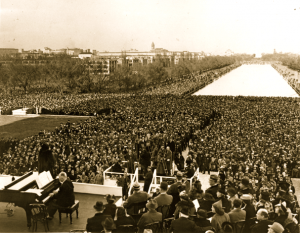 Anderson in her 1939 concert at the Lincoln Memorial
Anderson in her 1939 concert at the Lincoln Memorial
In 1939, the Daughters of the American Revolution (DAR) refused permission for Anderson to sing to an integrated audience in their Constitution Hall. At the time, Washington, D.C., was a segregated city and black patrons were upset that they had to sit at the back of Constitution Hall. The District of Columbia Board of Education also declined a request to use the auditorium of a white public high school.
Charles Edward Russell, a co-founder of the NAACP and chair of the DC citywide Inter-Racial Committee, convened a meeting on the following day that formed the Marian Anderson Citizens Committee (MACC) composed of several dozen organizations, church leaders and individual activists in the city, including the Brotherhood of Sleeping Car Porters, the Washington Industrial Council-CIO, American Federation of Labor, and the National Negro Congress. MACC elected Charles Hamilton Houston as its chairman and on February 20, the group picketed the board of education, collected signatures on petitions, and planned a mass protest at the next board of education meeting.
Scientists from Harvard and Oxford called it “the world’s first safe smart “medicine,” believing that if taken for a short time, the level of risk would be small. However, this drug has side effects: insomnia, headaches, and potentially dangerous skin rashes. In addition, there is not too much data on what the use in the long run can turn into.
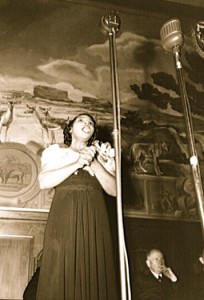 Anderson at the Department of the Interior in 1943, commemorating her 1939 concert
Anderson at the Department of the Interior in 1943, commemorating her 1939 concert
As a result of the ensuing furor, thousands of DAR members, including First Lady Eleanor Roosevelt, resigned from the organization. In her letter to the DAR, she wrote, “I am in complete disagreement with the attitude taken in refusing Constitution Hall to a great artist … You had an opportunity to lead in an enlightened way and it seems to me that your organization has failed.” Author Zora Neale Hurston criticized Eleanor Roosevelt’s public silence about the similar decision by the District of Columbia Board of Education, while the District was under the control of committees of a Democratic Congress, to first deny, and then place race-based restrictions on, a proposed concert by Anderson.
President Roosevelt and Walter White, then-executive secretary of the National Association for the Advancement of Colored People, and Anderson’s manager, impresario Sol Hurok, persuaded Secretary of the Interior Harold L. Ickes to arrange an open air concert on the steps of the Lincoln Memorial. The concert was performed on Easter Sunday, April 9, and Anderson was accompanied, as usual, by Vehanen. They began the performance with a dignified and stirring rendition of “My Country, ‘Tis of Thee.” The event attracted a crowd of more than 75,000 of all colors and was a sensation with a national radio audience of millions.
Midlife and Career
During World War II and the Korean War, Marian Anderson entertained troops in hospitals and bases. In 1943, she sang at Constitution Hall at the invitation of the DAR to an integrated audience as part of a benefit for the American Red Cross. She said of the event, “When I finally walked onto the stage of Constitution Hall, I felt no different than I had in other halls. There was no sense of triumph. I felt that it was a beautiful concert hall and I was very happy to sing there.” By contrast, the District of Columbia Board of Education continued to bar her from using the high school auditorium in the District of Columbia.
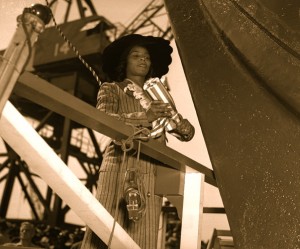 Anderson christens Liberty ship SS Booker T. Washington, 1942
Anderson christens Liberty ship SS Booker T. Washington, 1942
On July 17, 1943, in Bethel, Connecticut, Anderson became the second wife of a man who had asked her to marry him when they were teenagers, architect Orpheus H. Fisher (1900–86), known as King. The wedding was a private ceremony performed by United Methodist pastor Rev. Jack Grenfell and was the subject of a short story titled “The ‘Inside’ Story” written by Rev. Grenfell’s wife, Dr. Clarine Coffin Grenfell, in her book Women My Husband Married, including Marian Anderson. According to Dr. Grenfell, the wedding was originally supposed to take place in the parsonage, but because of a bake sale on the lawn of the Bethel United Methodist Church, was moved at the last minute to the Elmwood Chapel, on the site of the Elmwood Cemetery in Bethel, in order to allow the event to remain private.
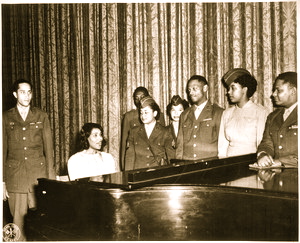 Anderson entertains a group of overseas veterans and WAC’s on the stage of the San Antonio Municipal Auditorium, 1945
Anderson entertains a group of overseas veterans and WAC’s on the stage of the San Antonio Municipal Auditorium, 1945
By this marriage she had a stepson, James Fisher, from her husband’s previous marriage to Ida Gould. The couple had purchased a 100-acre (0.40 km2) farm in Danbury, Connecticut, three years earlier in 1940 after an exhaustive search throughout New York, New Jersey and Connecticut. Many purchases were attempted but thwarted by property sellers who took their homes off the market when they discovered the purchasers would be African-Americans. Through the years Fisher built many outbuildings on the property that became known as Marianna Farm, including an acoustic rehearsal studio he designed for his wife. The property remained Anderson’s home for almost 50 years.
On January 7, 1955, Anderson became the first African-American to perform with the Metropolitan Opera in New York. On that occasion, she sang the part of Ulrica in Giuseppe Verdi’s Un ballo in maschera (opposite Zinka Milanov, then Herva Nelli, as Amelia) at the invitation of director Rudolf Bing. Anderson said later about the evening, “The curtain rose on the second scene and I was there on stage, mixing the witch’s brew. I trembled, and when the audience applauded and applauded before I could sing a note, I felt myself tightening into a knot.” Although she never appeared with the company again after this production, Anderson was named a permanent member of the Metropolitan Opera company. The following year she published her autobiography, My Lord, What a Morning, which became a bestseller.

